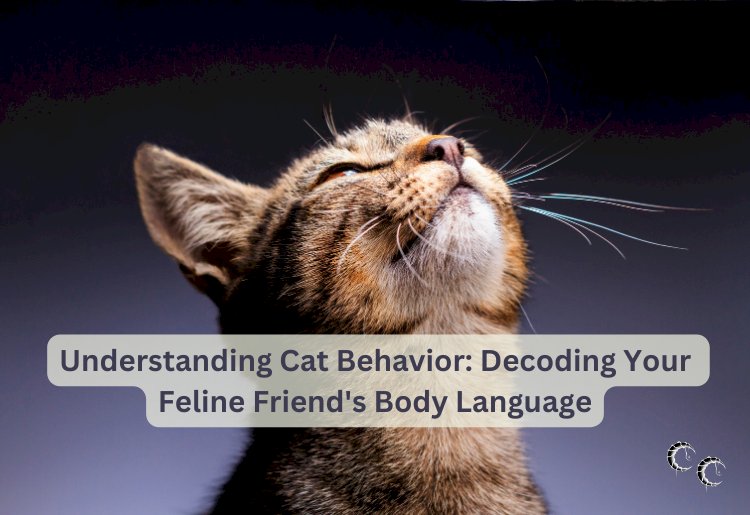Understanding Cat Behavior: Decoding Your Feline Friend's Body Language

Cats are fascinating creatures with a rich and intricate communication system that relies heavily on body language. While they may not meow out their thoughts like we do, they express themselves through subtle cues that can reveal a lot about their mood, intentions, and desires. By learning to decipher your feline friend's body language, you can better understand their needs and strengthen your bond with them. Here's a guide to help you interpret common cat behaviors:
-
Tail Position:
- Upright and Quivering: Indicates excitement or anticipation, often seen when greeting their favorite humans or preparing to play.
- Tucked Between Legs: Sign of fear or submission, suggesting that your cat feels threatened or insecure.
- Puffed Up: Indicates agitation or aggression, signaling that your cat feels threatened and may be preparing to defend themselves.
-
Ear Movements:
- Forward and Upright: Shows interest or curiosity, often seen when your cat is investigating a new object or sound.
- Flattened Back: Sign of fear, anxiety, or aggression, suggesting that your cat feels threatened or defensive.
- Rotated Sideways or Backwards: Indicates annoyance or discomfort, signaling that your cat is unhappy with the current situation.
-
Vocalizations:
- Meowing: Can convey various meanings depending on tone and pitch, such as greeting, requesting attention, or expressing discomfort.
- Purring: Often associated with contentment and relaxation, but can also indicate pain or distress in some cases.
- Hissing or Growling: Signs of fear, aggression, or territorial behavior, suggesting that your cat feels threatened and may lash out if provoked.
-
Body Posture:
- Relaxed and Open: Indicates comfort and trust, suggesting that your cat feels safe and secure in their environment.
- Tense and Crouched: Sign of fear or readiness to pounce, suggesting that your cat is on high alert and prepared to defend themselves.
- Rolling Over: Can be a sign of affection and trust, but may also indicate playfulness or a desire for attention.
-
Eye Contact:
- Slow Blinking: Sign of trust and affection, often used as a greeting or a gesture of comfort between cats and humans.
- Dilated Pupils: Can indicate excitement, arousal, or fear, suggesting that your cat is experiencing intense emotions.
- Staring with Unblinking Eyes: Sign of aggression or dominance, signaling that your cat may be feeling threatened or preparing to assert their authority.
By paying attention to these subtle cues and observing your cat's body language in different situations, you can gain valuable insights into their emotions and preferences. This deeper understanding will not only strengthen your bond with your feline friend but also help you provide the care and support they need to thrive in your home. Remember to approach interactions with patience, empathy, and respect for your cat's individual personality and boundaries.


























